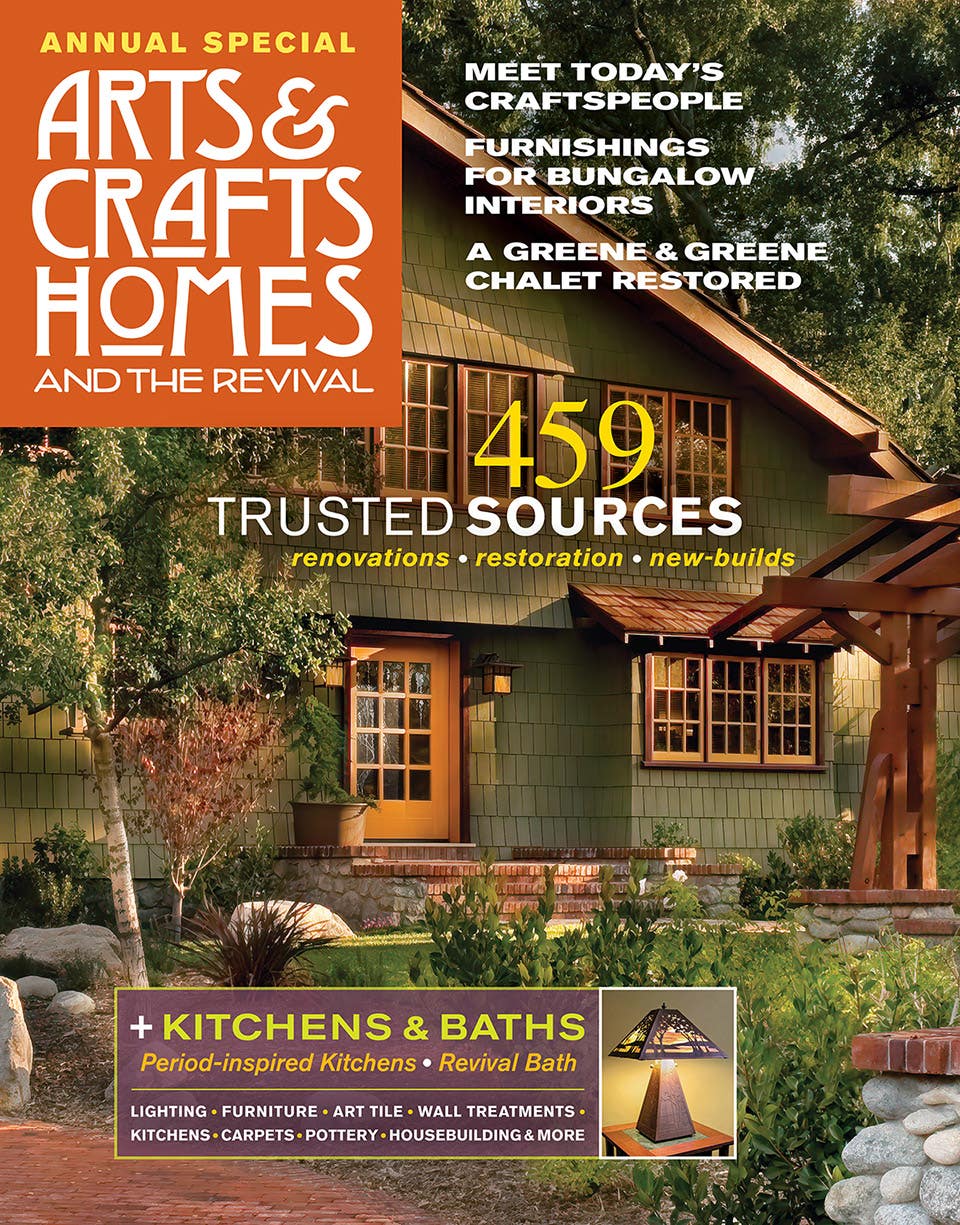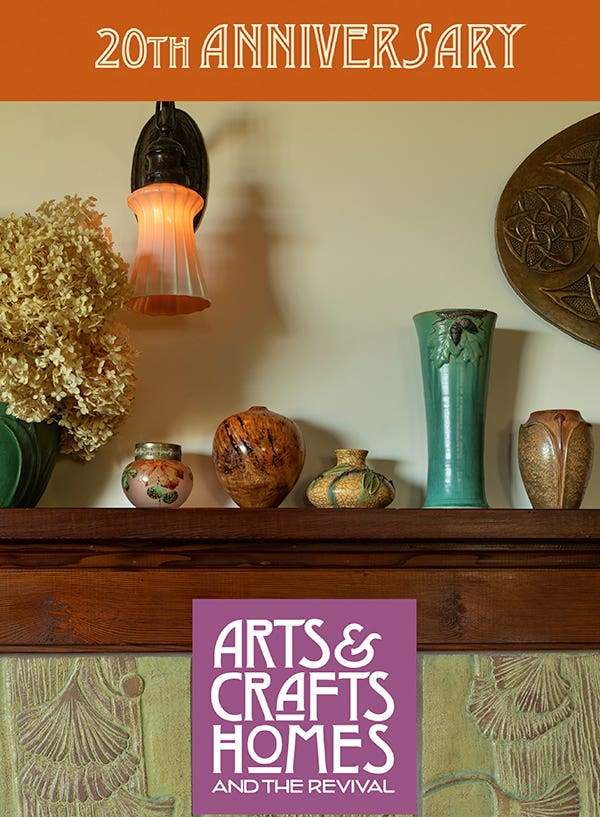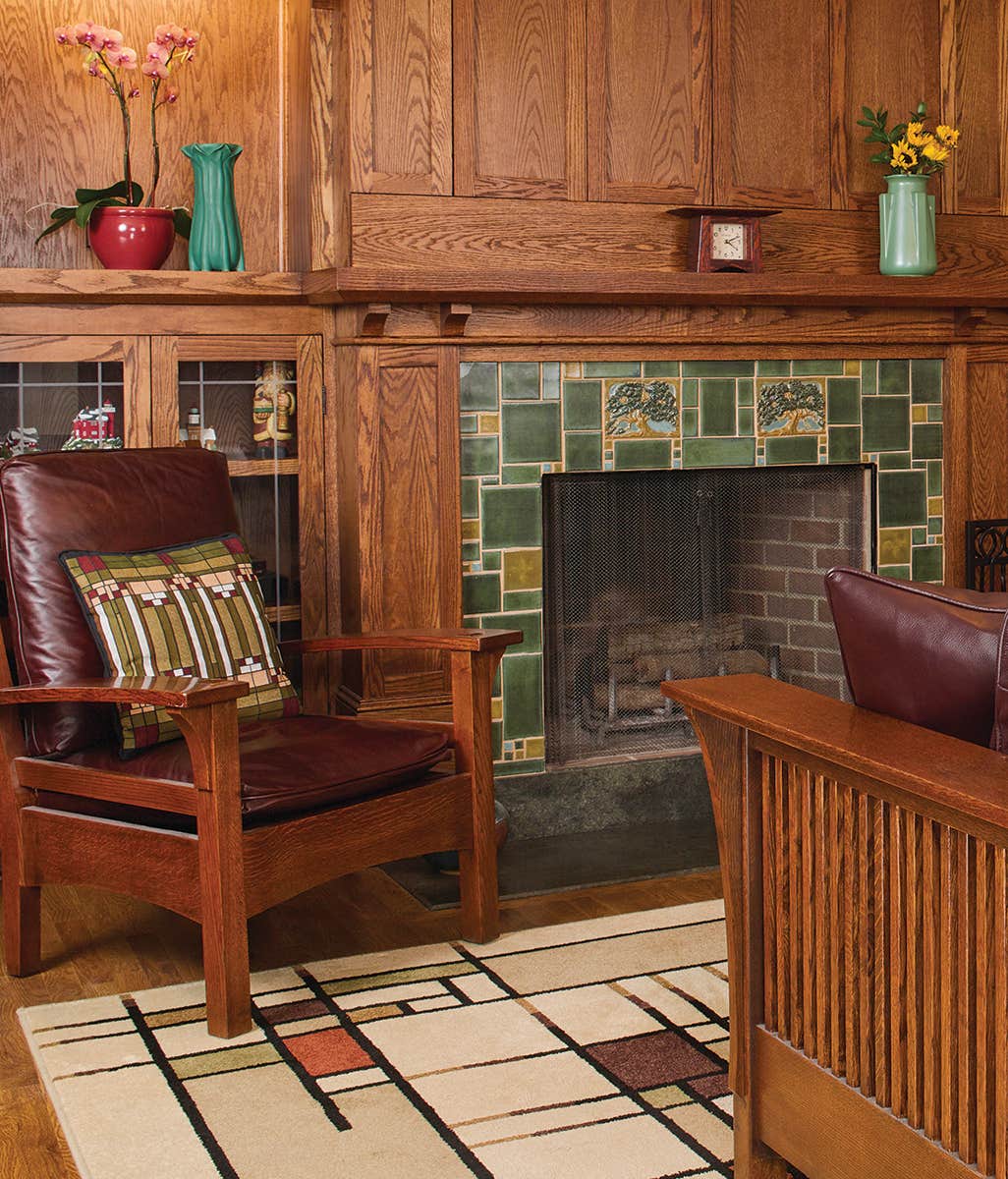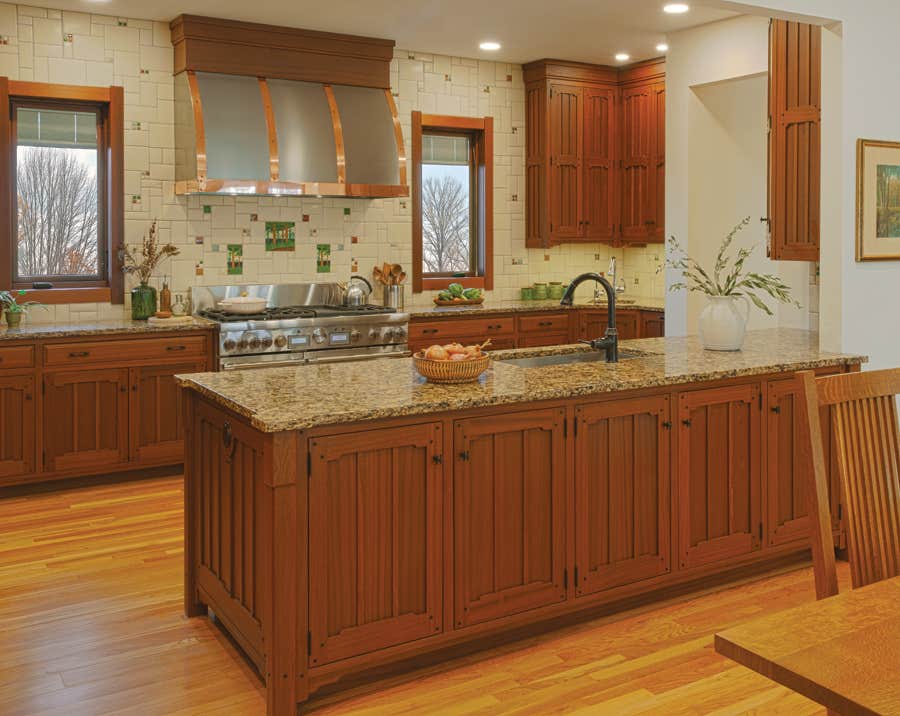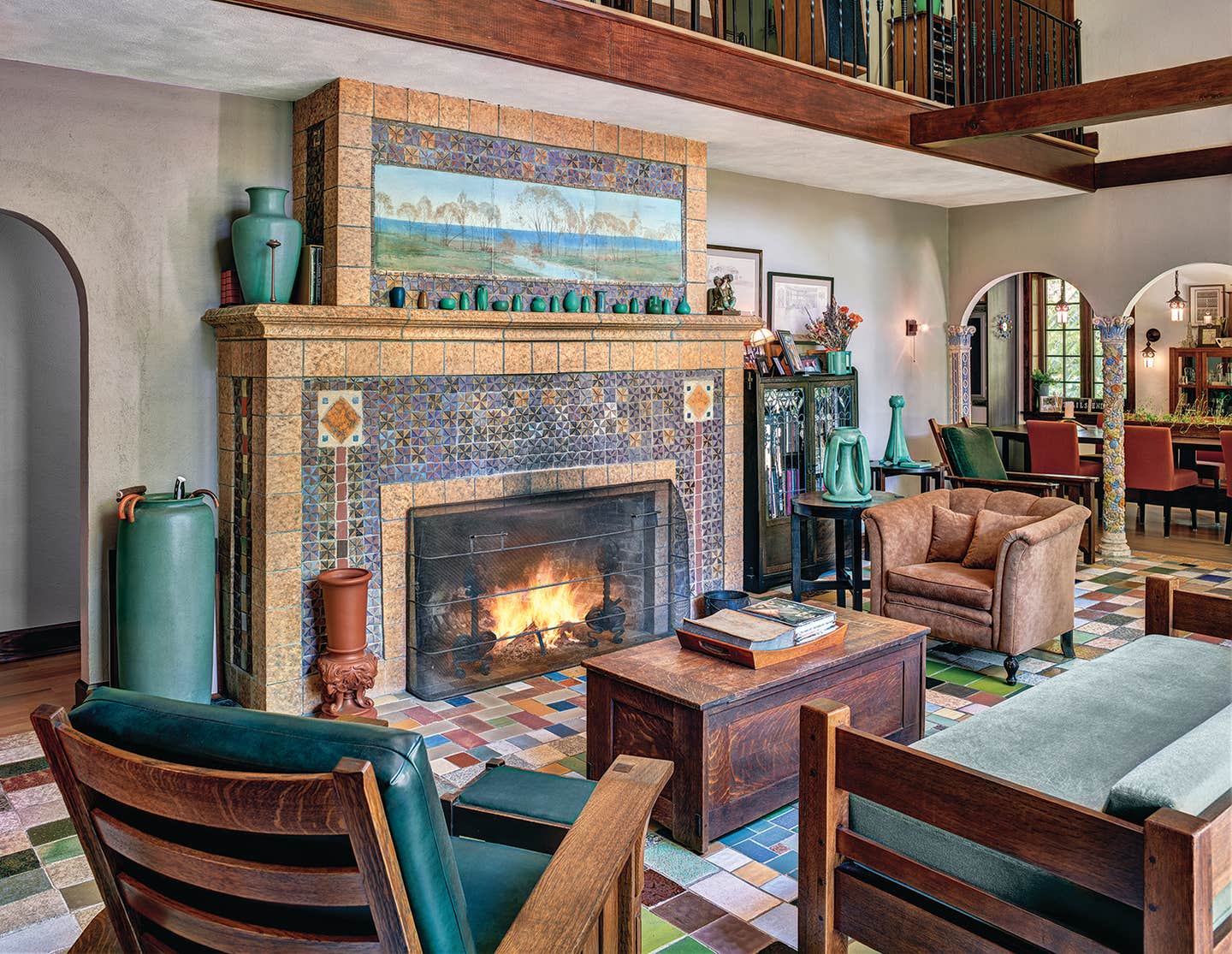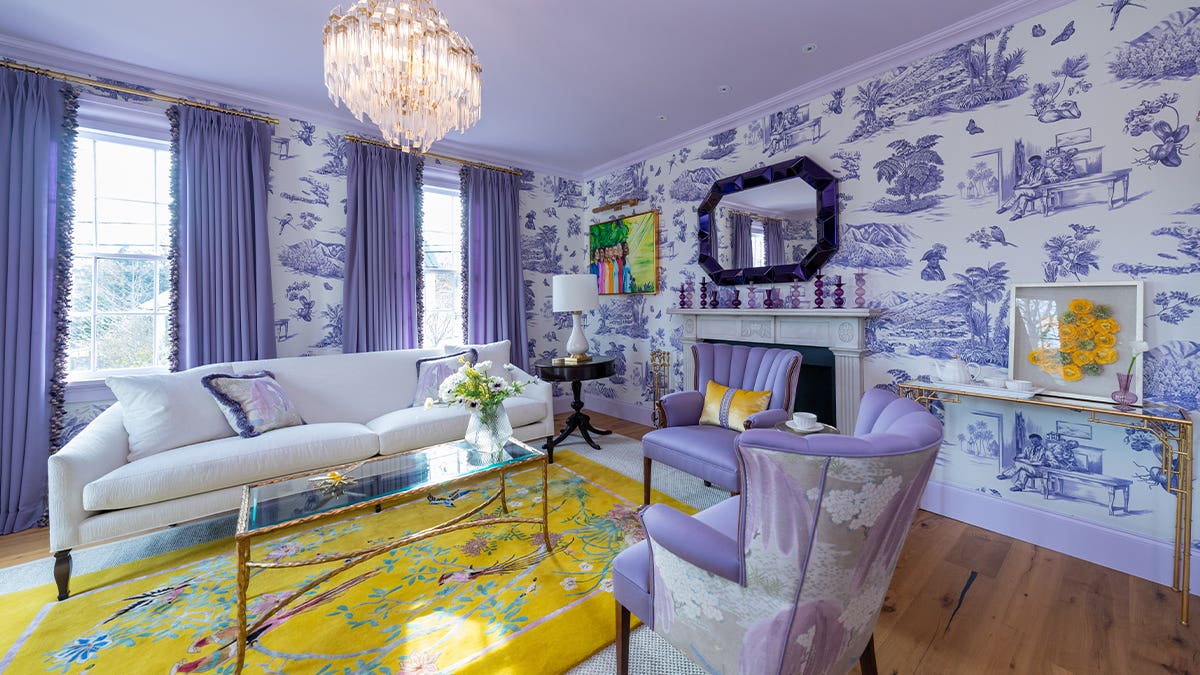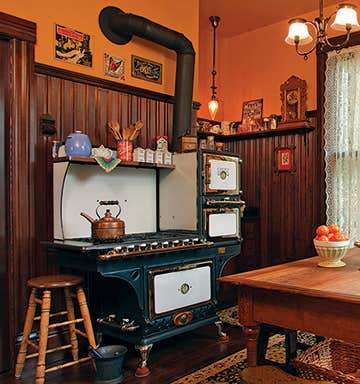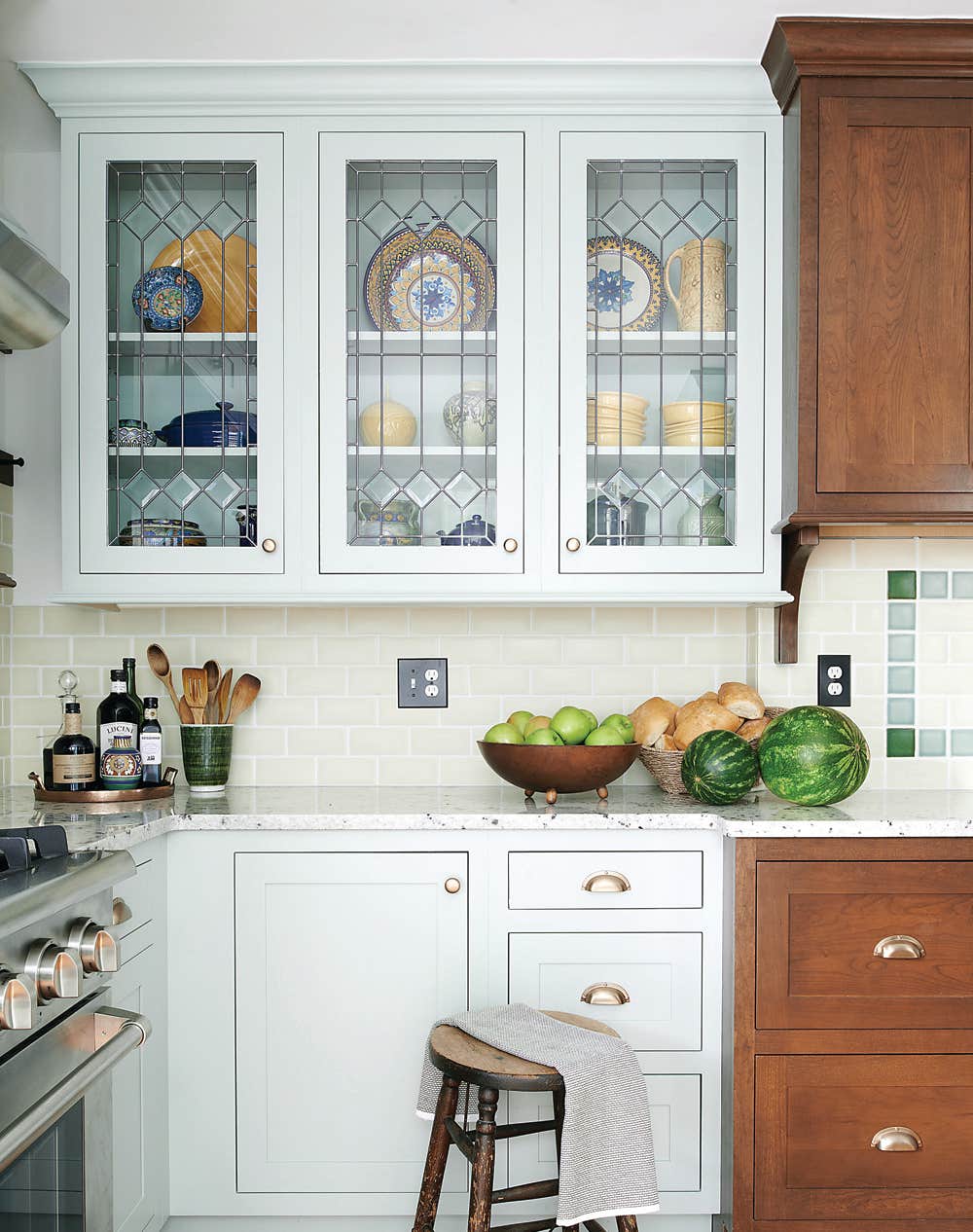Pleasures of Taking it Back
A 1914 kitchen is tweaked to reflect its roots.
One reason why George Crandall bought this modest Craftsman Bungalow near Portland, Oregon, was for the unpainted Douglas fir woodwork that had survived in the dining room, living room, and sunroom. “It was a house that hadn’t been messed with a lot,” George says.
The original leaded-glass windows with beveled diamond panes still cast artful shadows on dining-room walls. The built-in fir window seat could be opened for storage; tall wainscoting was topped by a deep frieze that would be perfect for George to hang William Morris-designed ‘Willow’ wallpaper.
The kitchen, however, needed tender loving care. Its cheap electric range, dated laminate countertops, 1950s vinyl flooring, and tip-out lower cabinets stood in stark contrast to the beautiful craftsmanship found in the rest of the house.
“I’m pretty good at restoring things,” says George, who has restored several vintage cars. George teaches woodworking and owns Craftsman Arts, an antiques business specializing in Arts & Crafts through Mid-century Modern furniture. He decided to undertake restoration of the house himself.
The electric range was occupying the space where the original woodstove had sat. To hide the hole in the wall where the stovepipe had been, George designed and built an upper cabinet, emulating the original built-in pantry cupboards. He replaced the existing cabinet to the right with a taller one. To make baking easier, he installed a wall oven in that cabinet. He added a trio of half-round shelves to the upper cabinet, on which are displayed Arts & Crafts pottery and an old toaster. The upper cabinet was outfitted with a stainless-steel range hood to accommodate his newly purchased vintage stove, a pristine mid-1930s Wedgewood gas range with oven, broiler, and two storage drawers. He was excited when he saw the classified ad advertising it, more so when he realized the old stove would fit perfectly in the space.
The 1935 G.E. Monitor Top refrigerator was a classifieds find as well. He refurbished it and refinished it using automotive enamel. He found a source for restoration parts, “so I replaced the gaskets and one of the relays that was a little dicey,” he says. “It works beautifully. You can’t keep ice cream hard in it, so I have a freezer on the back porch, but for most things the Monitor Top works fine.”
After unearthing the badly patched original fir floor, he decided to lay black and white, 12-in. square linoleum-like tiles. He started at the most noticeable area—the transition between rooms—and carried on from there.
The tip-out cabinets were largely original, but impractical, and were trimmed with a plastic laminate surface. “So I built conventional base cabinets and kept the area under the sink open, covering it with a coarse linen curtain, which I stenciled,” George says.
A used stainless-steel industrial sink married well with the pre-laminated maple butcher-block countertops he installed and trimmed with a capped maple backsplash.
With room now for a small island, George designed and built one topped with the same butcher-block wood used for countertops. The island design matches the cabinet design, but without doors. “If the stuff is pleasing to the eye, I like to see what I have and know where it is,” he says. “Things hidden behind doors are forgotten
and never used.”
Painting was the final step in creating a charming Arts & Crafts-era kitchen: the formerly white walls are now a period green, crowned with a stencil motif.
Stencil Decoration
The Arts & Crafts movement saw stenciling as the simpler, do-it-yourself alternative to fussy Victorian wallpapers. To create the rose border, George Crandall bought two Arts & Crafts-era Helen Foster 18" acetate stencils. He established a color palette for the room and the stencil, referring to the Sherwin-Williams Preservation Palette for guidance. George began by wrapping the dual rose stencil around the stove corner, then he spaced the pattern equally from that point around the room. He used both stencil brushes (with short, stiff bristles) and, for blending, quick-drying oil Richeson Shiva Artist Paintstiks. The paint sticks were wrapped in plastic to keep them from drying out.
Resources
Flooring: vinyl black and white 12” tiles Armstrong armstrong.com
Stencil: Rose designs and more Helen Foster Stencils fair oak workshops fairoak.com
Paint ‘Ruskin Room Green’ sherwin-williams sherwin-williams.com
Pendant lamp: Rejuvenation rejuvenation.comWallpaper bradbury & bradbury bradbury.com
Furnishings: Antiques sourced by Craftsman Arts, through the French Unicorn, Salem, OR thefrenchunicorn.com
Donna Pizzi is a writer and producer for film and print, and co-owner of Blackstone Edge Studios with her husband, photographer Philip Clayton–Thompson. Over three decades, Pizzi has scouted out and written countless articles about home restoration for Arts & Crafts Homes and Old House Journal.

